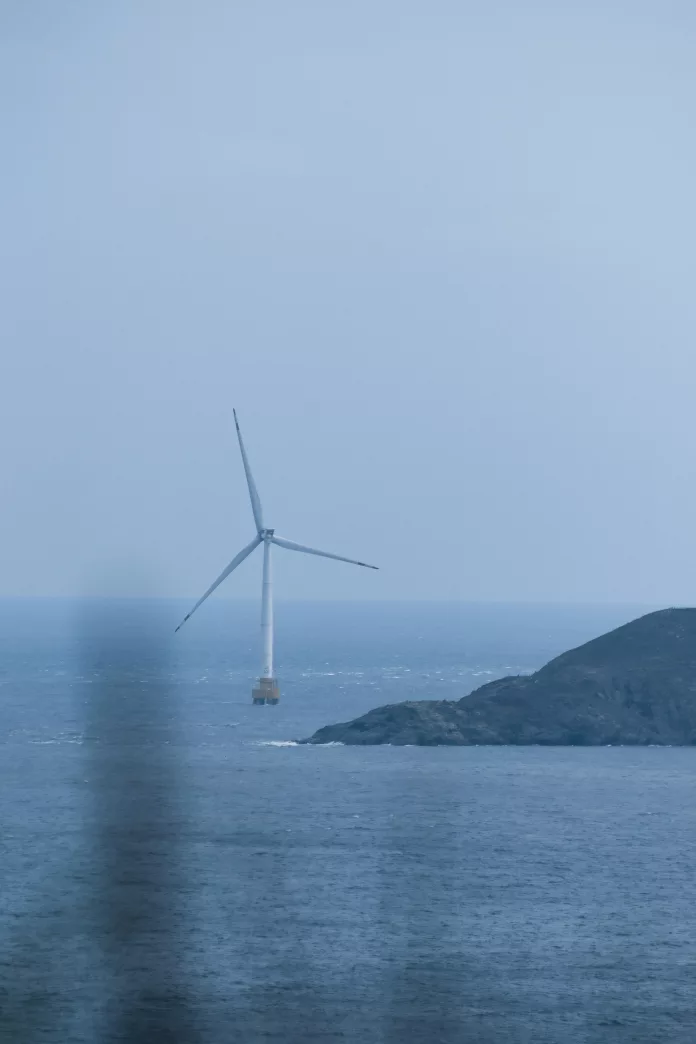As the world steers towards sustainable solutions, a revolutionary concept emerges where maritime industries intertwine with the growing offshore wind farms. This inventive collaboration not only supports the energy transition but promises economic efficiencies in establishing wind farms. One such breakthrough features a dual-turbine floating wind farm destined to support a commercial fishery operation.
Fusion of Aquaculture and Renewable Energy
Hexicon, a Swedish trailblazer known for its distinctive dual-turbine platforms, introduces a concept that, although initially perceived as unconventional, has gained traction with multiple projects such as a 7.1-gigawatt Italian wind farm venture. This innovative company extends its efforts by partaking in Freja Offshore, with plans to launch a pilot fish farm at their Mareld wind farm, situated a substantial distance from the Swedish coast. Collaborators include the Norwegian Subfarm, Lysekil Municipality, and Blue Maritime of Norway, with insights from the water-oriented DHI Group renowned for its technological expertise.
Symbiosis of Industries in Offshore Development
Offshore wind is navigating its relationship with the global fishing industry delicately. Given the urgency to decarbonize to save marine life, forging alliances through a multi-use strategy in offshore development is proving beneficial. Hexicon illustrates the crucial contribution of wind power in meeting regional energy demands and highlights the importance of harmonious existence with other marine enterprises. Magnus Hallman of Freja Offshore emphasizes the necessity of integrating seafood production with wind energy to bolster Sweden’s resilience and preparedness, a sentiment echoed by NATO’s heightened focus on security amidst global tensions.
Creating New Horizons in Offshore Wind and Aquaculture
Hexicon isn’t alone in its endeavor to integrate fisheries within wind farm structures, with China and others already exploring such prospects. Offshore wind farms may potentially function as artificial reefs, fostering marine life and presenting opportunities for controlled aquaculture. Subfarm aims to optimize this potential with its submersible caging solution, offering enhanced protection against common aquaculture issues, according to recent studies. The infrastructure of the Mareld project will anchor fish farm cages apart from the wind platforms, engineering a new wave of maritime coexistence.
Elevating Aquaculture through Offshore Wind Synergy
The concept of multi-use offshore wind farms caught significant attention at the Ocean Energy Europe conference of 2023. Beyond merging renewable energy technologies, the inclusion of aquaculture is gaining research support. A Danish study proposes that combining wind energy with low-trophic aquaculture could yield restorative ecosystem benefits and abundant seafood while capturing significant amounts of carbon. This alliance could bolster the global sustainable development agenda and mitigate climate change impacts.
The Baltic Sea at the Crossroads of Change
Russia’s access to the Baltic Sea is increasingly constrained with Sweden’s NATO accession, leaving only slender passages near St. Petersburg and Kaliningrad open. While Russia’s involvement in Baltic offshore wind developments seems improbable, the geopolitical landscape continues to evolve, presenting a mix of challenges and opportunities as the Baltic gears up for a transformative era of offshore wind and sustainable marine practices.

























